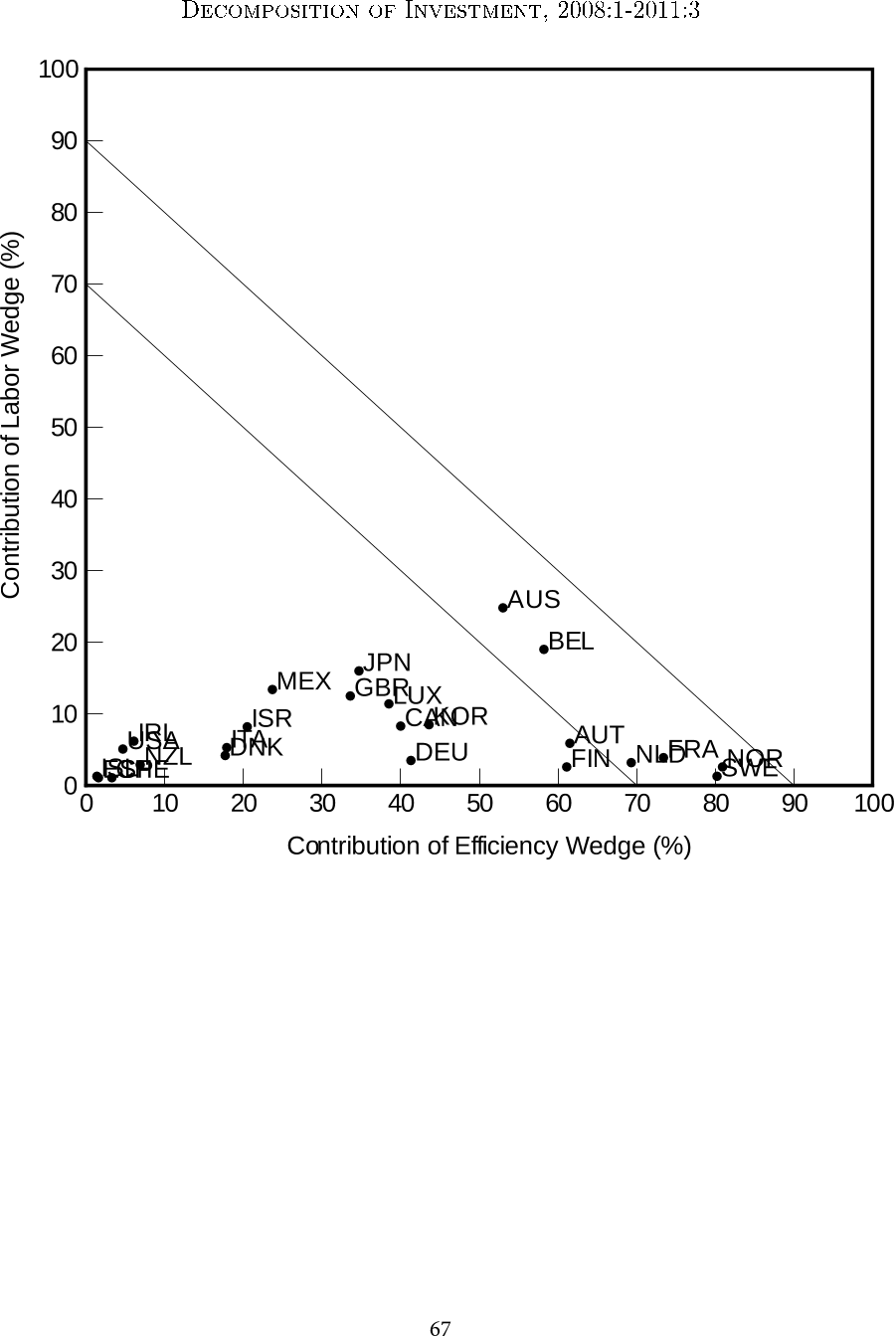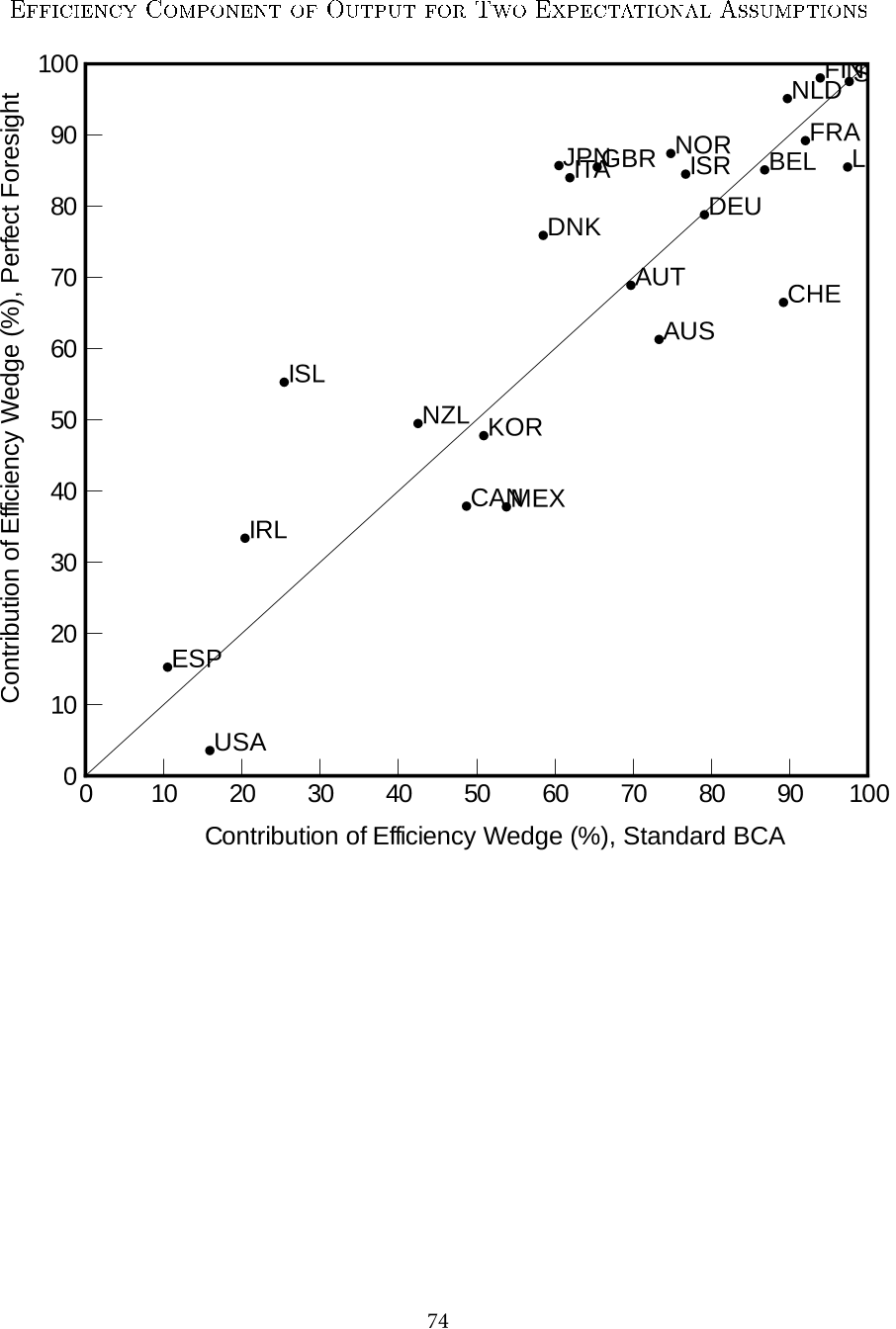
NBER WORKING PAPER SERIES
ACCOUNTING FOR BUSINESS CYCLES
Pedro Brinca
V. V. Chari
Patrick J. Kehoe
Ellen McGrattan
Working Paper 22663
http://www.nber.org/papers/w22663
NATIONAL BUREAU OF ECONOMIC RESEARCH
1050 Massachusetts Avenue
Cambridge, MA 02138
September 2016
We thank Peter Klenow for useful comments and Francesca Loria for excellent research
assistance. Chari and Kehoe thank the National Science Foundation for financial support. Pedro
Brinca is grateful for financial support from the Portuguese Science and Technology Foundation,
grants number SFRH/BPD/99758/2014, UID/ECO/00124/2013, and UID/ECO/00145/2013. The
views expressed herein are those of the authors and not necessarily those of the Federal Reserve
Bank of Minneapolis, the Federal Reserve System, or the National Bureau of Economic Research.
NBER working papers are circulated for discussion and comment purposes. They have not been
peer-reviewed or been subject to the review by the NBER Board of Directors that accompanies
official NBER publications.
© 2016 by Pedro Brinca, V. V. Chari, Patrick J. Kehoe, and Ellen McGrattan. All rights reserved.
Short sections of text, not to exceed two paragraphs, may be quoted without explicit permission
provided that full credit, including © notice, is given to the source.

Accounting for Business Cycles
Pedro Brinca, V. V. Chari, Patrick J. Kehoe, and Ellen McGrattan
NBER Working Paper No. 22663
September 2016
JEL No. E00,E12,E13,E22,E24,E44
ABSTRACT
We elaborate on the business cycle accounting method proposed by Chari, Kehoe, and McGrattan
(2007), clear up some misconceptions about the method, and then apply it to compare the Great
Recession across OECD countries as well as to the recessions of the 1980s in these countries. We
have four main findings. First, with the notable exception of the United States, Spain, Ireland, and
Iceland, the Great Recession was driven primarily by the efficiency wedge. Second, in the Great
Recession, the labor wedge plays a dominant role only in the United States, and the investment
wedge plays a dominant role in Spain, Ireland, and Iceland. Third, in the recessions of the 1980s,
the labor wedge played a dominant role only in France, the United Kingdom, Belgium, and New
Zealand. Finally, overall in the Great Recession the efficiency wedge played a more important
role and the investment wedge played a less important role than they did in the recessions of the
1980s.
Pedro Brinca
Robert Schuman Centre for Advanced Studies
San Domenico di Fiesole
Italy
pedro.ms.brinca@gmail.com
V. V. Chari
Department of Economics
University of Minnesota
1035 Heller Hall
271 - 19th Avenue South
Minneapolis, MN 55455
and NBER
varadarajanvchari@gmail.com
Patrick J. Kehoe
Department of Economics
Stanford University
579 Serra Mall
Stanford, CA 94305
and NBER
patrickjameskehoe@gmail.com
Ellen McGrattan
Department of Economics
University of Minnesota
4-101 Hanson Hall
1925 4th St S
Minneapolis, MN 55455
and NBER
erm@umn.edu

In this paper we elaborate on the business cycle accounting method proposed by Chari,
Kehoe, and McGrattan (2007), henceforth CKM, clear up some misconceptions about the
method, and then apply it to compare the Great Recession across OECD countries as well
as to the recessions of the 1980s in these countries. The goal of the method is to help guide
researchers’choices about where to introduce frictions into their detailed quantitative models
in order to allow the models to generate business cycle ‡uctuations similar to those in the
data.
The method has two components: an equivalence result and an accounting procedure.
The equivalence result is that a large class of models, including models with various types of
frictions, is equivalent to a prototype model with various types of time-varying wedges that
distort the equilibrium decisions of agents operating in otherwise competitive markets. At
face value, these wedges look like time-varying productivity, labor income taxes, investment
taxes, and government consumption. We labeled these wedges e¢ ciency wedges, labor wedges,
investment wedges, and government consumption wedges.
The accounting procedure also has two components. It begins by measuring the wedges,
using data together with the equilibrium conditions of a prototype model. The measured
wedge values are then fed back into the prototype model, one at a time and in combinations,
in order to assess how much of the observed movements of output, labor, and investment can
be attributed to each wedge, separately and in combinations.
Here we use this method to study the Great Recession in OECD countries. We also
compare this recession with the recessions of the early 1980s. While the exact timing of
the recessions of the early 1980s di¤ers across countries in our OECD sample, most of the
countries had a recession between 1980 and 1984. Throughout we refer to the recessions of
the early 1980s as the 1982 recession. We have four main …ndings. First, with the notable
exception of the United States, Spain, Ireland, and Iceland, the Great Recession was driven
primarily by the e¢ ciency wedge. Second, in the Great Recession, the labor wedge plays a
dominant role only in the United States, and the investment wedge plays a dominant role in
Spain, Ireland, and Iceland. Third, in the recessions of the 1980s, the labor wedge played
a dominant role only in France, the United Kingdom, Belgium, and New Zealand. Finally,
overall in the Great Recession the e¢ ciency wedge played a more important role and the

investment wedge played a less important role than they did in the recessions of the 1980s.
We now turn to elaborating on the equivalence results in CKM that link the four
wedges to detailed models. We begin by showing that a detailed economy with ‡uctuations
in investment-speci…c technological change similar to that in Greenwood, Hercowitz, and
Krusell (1997) maps into a prototype economy with investment wedges. This result makes
clear that investment wedges are by no means synonymous with …nancial frictions, a point
stressed by CKM.
We then consider an economy that blends elements of Kiyotaki and Moore (1997)
with that of Gertler and Kiyotaki (2009). The economy has a representative household
and heterogeneous banks that face collateral constraints. We show that such an economy
is equivalent to a prototype economy with investment wedges. This result makes clear that
some ways of modeling …nancial frictions do indeed show up as investment wedges.
Finally, we turn to an economy studied by Buera and Moll (2015) consisting of workers
and entrepreneurs. The entrepreneurs have access to heterogeneous production technologies
that are subject to shocks to collateral constraints. We follow Buera and Moll (2015) in
showing that this detailed economy is equivalent to a prototype model with a labor wedge,
an investment wedge, and an e¢ ciency wedge. This equivalence makes the same point as does
the input-…nancing friction economy in CKM, namely, that other ways of modeling …nancial
frictions can show up as e¢ ciency wedges and labor wedges.
The point of the three examples just discussed is to help clarify how the pattern of
wedges in the data can help researchers narrow down the class of models they are considering.
If, for example, most of the ‡uctuations are driven by the e¢ ciency and labor wedges in the
data, then of the three models just considered, the third one is more promising than the …rst
two.
We then turn to models with search frictions. We use these models to make an
important point. Researchers should choose the baseline prototype economy that provides
the most insights for the research program of interest. In particular, when the detailed
economies of interest are su¢ ciently di¤erent from the one-sector growth model, it is often
more instructive to adjust the prototype model so that the version of it without wedges
corresponds to the planning problem for the class of models at hand. For example, when we
2

map the model with e¢ cient search into the one-sector model, that model does have e¢ ciency
and labor wedges, but if we map it into a new prototype model with two capital-like variables,
physical capital and the stock of employed workers, the new prototype model has no wedges.
We then consider a search model with an ine¢ cient equilibrium. When we map this
model into the new prototype model with two capital-like variables, then the prototype model
has only labor wedges. But if we map it into the original prototype model, it has e¢ ciency
wedges and (complicated) labor wedges. These …ndings reinforce the point that it is often
more instructive to adjust the prototype model so that the version of it without wedges
corresponds to the planning problem for the class of models at hand.
Taken together, these equivalence results help clear up some common misconceptions.
The …rst misconception is that e¢ ciency wedges in a prototype model can only come from
technology sho cks in a detailed model. In our judgment, by far the least interesting inter-
pretation of e¢ ciency wedges is as narrowly interpreted shocks to the blueprints governing
individual …rm production functions. More interesting interpretations rest on frictions that
deliver such high-frequency movements in this wedge. For example, the input-…nancing fric-
tion model in CKM shows how …nancial frictions in a detailed model can manifest themselves
as e¢ ciency wedges. Indeed, we think that exploring detailed models in which the sudden
drops in e¢ ciency wedges experienced in recessions come from frictions such as input-…nancing
frictions is more promising than blaming these drops on abrupt negative shocks to blueprints
for technologies. The second misconception is that labor wedges in a prototype model arise
solely from frictions in labor markets in detailed economies. The Buera-Moll economy makes
clear that this view is incorrect. The third misconception is that investment wedges arise
solely due to …nancial frictions. Clearly, the detailed model with investment-speci…c techni-
cal change shows that this view is also incorrect.
We turn now to describing our procedure. This procedure is designed to answer
questions of the following kind: How much would output ‡uctuate if the only wedge that
‡uctuated is the e¢ ciency wedge and the probability distribution of the e¢ ciency wedge is
the same as in the prototype economy? If the wedges were independent at all leads and
lags, the procedure can be implemented in a straightforward manner by letting only, say, the
e¢ ciency wedge ‡uctuate and setting all other wedges to constants. In the data, the wedges
3





